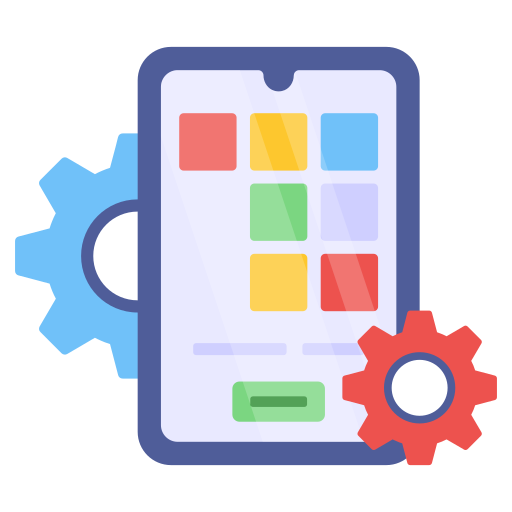
The Future of Work: How Employee Monitoring Software is Shaping the New Normal
Today, your office is where you choose it to be, whether it’s your cozy living room, a corner of your favorite cafe, or even a hammock on a tropical beach. This is the new normal, where the workplace has become an extension of your daily life rather than a distinct physical location. But, here’s the kicker: in this world, your performance isn’t measured by your presence in the office, but by the digital footprints you leave behind. This is the future of work, and at its heart is Employee Monitoring Software. It’s the digital hand that guides us in the right path. Join us as we unlock the secrets of this digital shift, and discover how it’s shaping the future of work in ways you might never have imagined.
Why Should You Use Employee Monitoring Software?
Ensuring optimal productivity and efficiency has become more crucial than ever. With the rise of remote work and diverse team structures, it has become imperative to employ tools to manage employee activities. Hence, employee monitoring software emerges as a vital solution, catering to a multitude of organizational needs.
Let’s delve into why you should consider integrating it into your work system.

Automated Screenshots
A comprehensive understanding of employees’ work patterns can be achieved using automated screenshots, promoting accountability and enhancing transparency. This visual report enables employers to grasp the progress of tasks, identify potential roadblocks, and ensure that time is dedicated to essential tasks, boosting overall productivity.

App and URL Tracking
By monitoring the applications and websites accessed by employees, organizations can ascertain the level of focus and identify any potential security risks. This tracking functionality aids in curbing unproductive habits, reducing distractions, and safeguarding sensitive data, thereby fostering a secure and conducive work environment.

Time and Attendance
Effective time and attendance management streamline the tracking of employee work hours, ensuring fair compensation and adherence to work schedules. This fosters a culture of punctuality and accountability, thereby promoting a sense of discipline and enhancing overall work ethics within the organization.

Shift Management
Employee monitoring software streamlines the allocation and management of shifts, facilitating a seamless coordination of tasks and ensuring adequate coverage at all times. This aids in maintaining a balanced workload distribution, enhancing team collaboration, and mitigating any potential scheduling conflicts, thereby fostering a harmonious work environment.

Leave Management
By providing a centralized platform for leave requests and approvals, this software simplifies the process of managing employee leaves. It aids in maintaining an accurate record of absences, facilitating efficient planning and ensuring the smooth operation of tasks even in the absence of key personnel, thereby minimizing workflow disruptions and enhancing overall operational efficiency.
Having said that, employee monitoring software serves as a powerful tool for businesses aiming to optimize their operations and foster a culture of transparency, accountability, and productivity. Its multifaceted functionalities cater to various organizational needs, making it an indispensable asset in today’s dynamic work environment.
Statistical Fact
According to a survey by Gartner, 82% of company leaders plan to allow employees to work remotely some of the time, and 47% plan to allow employees to work remotely full-time.
Current Trends In Employee Monitoring
Keeping a pulse on employee activities has become increasingly vital for organizations aiming to maintain productivity and ensure a secure work environment. Recognizing the significance of effective employee monitoring, let us look at the current trends shaping this essential aspect of contemporary workforce management.

Emphasis on Remote Work Monitoring
The widespread adoption of remote work has prompted a shift in focus toward tools and practices tailored to monitor remote employees effectively. This includes the integration of specialized software that can track not only work hours but also overall productivity, collaboration patterns, and emotional well-being to ensure a healthy work-life balance.

Utilization of AI and Predictive Analytics
Employee monitoring tools are likely incorporating advanced AI algorithms and predictive analytics to offer deeper insights into employee behavior and performance. This enables employers to anticipate potential issues, identify patterns of burnout or disengagement, and take proactive measures to improve employee satisfaction and productivity.

Integration of Employee Well-being Metrics
Modern employee monitoring systems may be incorporating metrics related to employee well-being, including stress levels, work satisfaction, and overall mental health. By tracking these indicators, companies can adjust workloads, provide necessary support, and create a more conducive work environment that prioritizes the holistic well-being of their workforce.

Gamification of Productivity Tracking
Some employee monitoring software solutions may incorporate elements of gamification to motivate employees and enhance their productivity. This could include the use of leaderboards, achievement badges, or rewards systems based on performance metrics, fostering a more engaging and competitive work environment.
Statistical Fact
A study by the American Management Association revealed that organizations using employee monitoring software experienced an average productivity increase of 30%.
Future Trends In Employee Monitoring
In the coming years we can expect employee monitoring software to focus on finding a ground between productivity and privacy. With advancing technology these tools will become more advanced to analyze employee actions and offer insights. The future of employee monitoring software is poised for a transition, towards solutions that prioritize both the well being and productivity of employees while respecting their rights and privacy.
Integration of Augmented Reality (AR) and Virtual Reality (VR)

As AR and VR technologies continue to advance, employee monitoring systems might incorporate immersive monitoring solutions that enable real-time tracking and analysis to maximize employee performance within virtual work environments. This fosters interactive training, collaboration, and performance evaluation.
1. Effect on Businesses
Businesses can create immersive training experiences, simulate real-world scenarios, and enhance remote collaboration. This trend can improve employee skills and boost productivity. Moreover, it can assist in remote troubleshooting and maintenance, reducing downtime in various industries.
2. Ethical AI-driven Monitoring Practices

Anticipated future trends in employee monitoring could involve the implementation of AI-driven monitoring practices that prioritize ethical data usage, ensuring transparency, fairness, and compliance with stringent privacy regulations. Having said that, it fosters a culture of trust and accountability within the organization.
Effect on Businesses
Ethical AI-driven monitoring practices will help companies strike a balance between monitoring for productivity and respecting employee privacy. Businesses can build trust and create a more positive work environment, leading to higher job satisfaction and retention rates. It also helps in compliance with evolving privacy regulations.
3. Personalized Employee Development Plans

Future employee monitoring tools may integrate personalized employee development plans based on individual performance data. As such, it leverages machine learning algorithms to identify specific training needs, mentorship opportunities, and career advancement pathways. This in turn enhances continuous learning and professional growth for each employee.
Effect on Businesses
Personalized development plans can significantly improve employee engagement and performance. And the best part? It can put an end to toxic productivity, if any. With tailored training and development programs, businesses can nurture the skills and capabilities of individual employees. As such, this results in a more skilled and adaptable workforce.
4. Intelligent Employee Assistance Systems

Future employee monitoring systems might integrate intelligent virtual assistants and chatbots to provide real-time support and guidance to employees. This offers timely suggestions, resolving queries, and facilitating a seamless work experience while ensuring adherence to organizational policies and procedures.
Effect on Businesses
These systems can streamline processes, answer employee queries, and provide immediate assistance. This not only enhances productivity but can also manage the workforce by reducing the time and effort needed to access information or support. It can also enhance onboarding processes and facilitate a smoother work experience.
5. Predictive Health and Wellness Monitoring

Anticipated advancements in employee monitoring could include the integration of predictive health and wellness monitoring tools that track physiological and psychological indicators. This enables early detection of stress or burnout and facilitates timely interventions to promote employee well-being and mental health.
Effect on Businesses
By monitoring the health and wellness of employees, businesses can proactively address health issues, reducing sick days and improving overall productivity. Moreover, such monitoring can contribute to a healthier, more engaged workforce, leading to a reduction in healthcare costs and an increase in employee well-being.
Incorporating these trends into employee monitoring software can provide businesses with a competitive edge by improving the future of employee productivity. This also fosters a positive work environment, enhancing compliance, and optimizing employee development. However, it’s essential for businesses to implement these technologies and practices thoughtfully. Wondering why? Because, addressing concerns related to privacy, data security, and ethics to ensure they achieve the intended benefits without negative consequences.
In Conclusion
As we bid adieu to the traditional workplace and embrace the exciting, tech-driven future of work, it’s essential to recognize the transformative role of employee monitoring software. So, here’s to the future of employee monitoring, where efficiency meets ethics, and the workforce flourishes in a balanced, tech-enhanced environment.
Wishing you all the best on this incredible journey ahead. Happy reading!
Comments